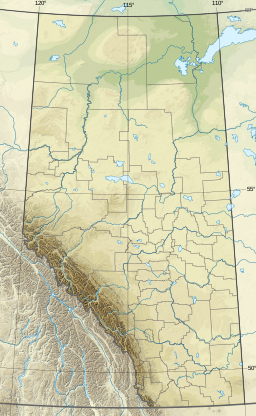Lake History
Christina Lake and the Christina River were named to honour Christine Gordon, originally from Scotland, who was the first white woman to live permanently in the Fort McMurray area, where she remained until her death in the 1940s. She was highly respected by the community, including the First Nations and Métis. [5] Gordon, partly based on knowledge gleaned from a Scottish home nursing book, made her own treatments for illnesses and injuries. She could "splint a broken arm, lower a fever, and mix herbal remedies." By 1914 she owned and operated a post in Fort McMurray, in competition with the Hudson's Bay Company. [2] [3] [1] [4]
The hamlet of Conklin was originally situated on the extreme northwestern end of Christina Lake, adjacent to the outlet at the Jackfish River. When the Alberta and Great Waterways Railway (which eventually became part of the Northern Alberta Railway and later the Athabasca Northern Railway) [6] reached Conklin in 1921, the town was relocated alongside the railway tracks. [5]
Christina Lake was an important centre for the local fur trade from 1940 to 1960. Mink pelts from several mink farms in the area were transferred by canoe and dogsled to the railway siding for shipment to markets. [5]
From 1940 to 1960 there was heavy commercial fishing in Christina Lake, and a fish processing plant was located at the outlet to the Jackfish River. [5]
This page is based on this
Wikipedia article Text is available under the
CC BY-SA 4.0 license; additional terms may apply.
Images, videos and audio are available under their respective licenses.

